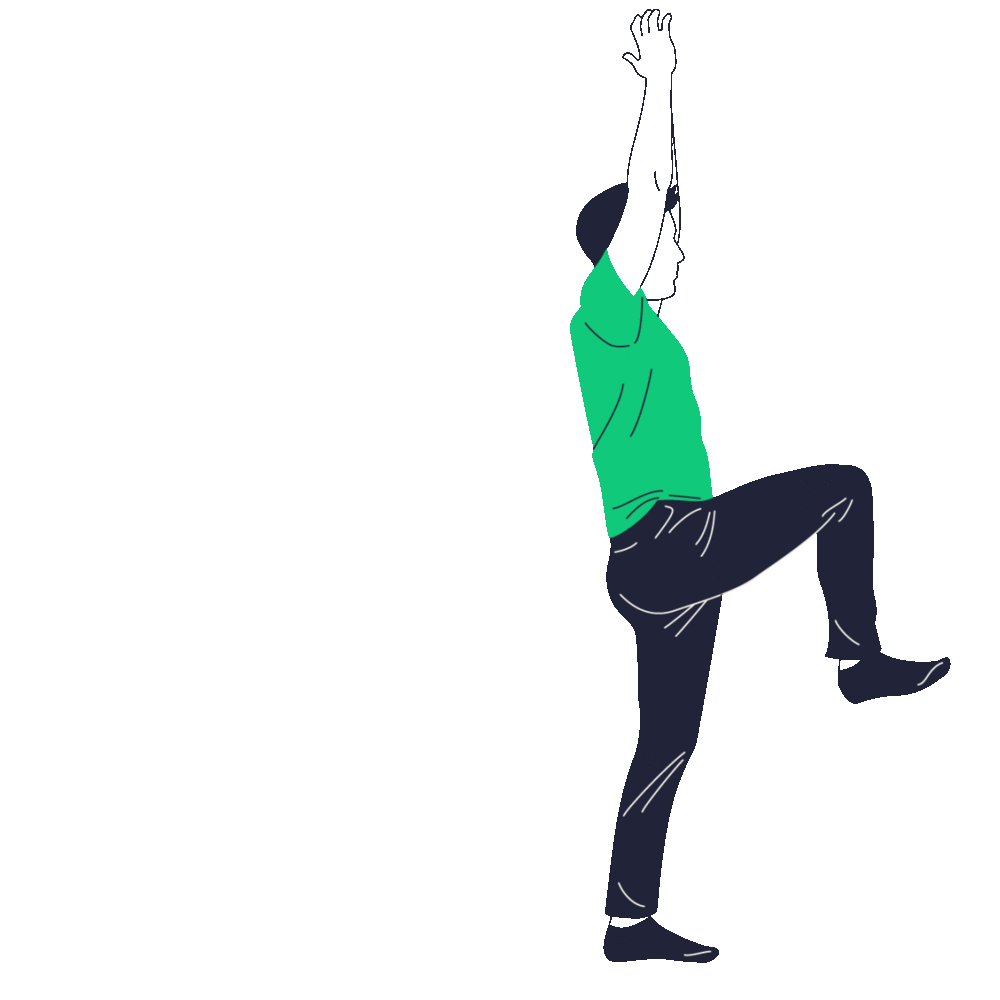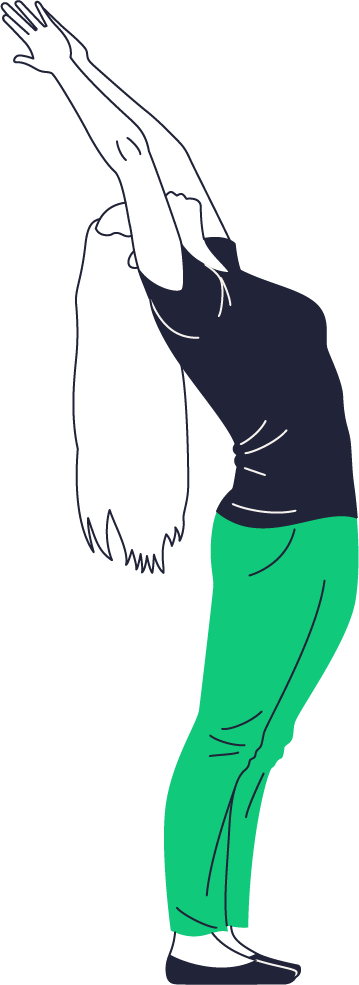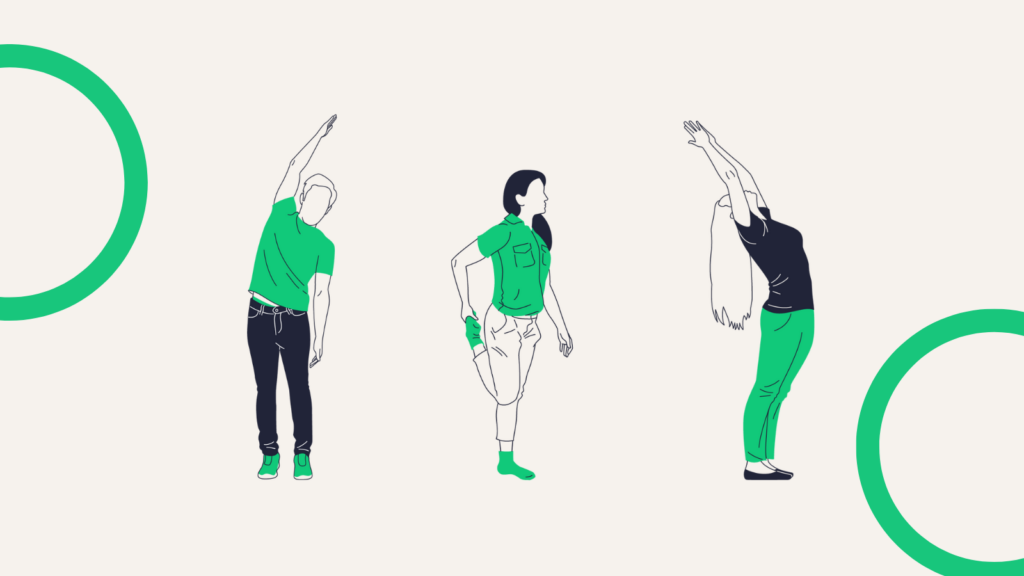The multiple health risks of sitting too much are well documented, and one which is particularly significant and seemingly on the increase is diabetes, often associated with weight gain. A recent study looked at the effect of desk workers doing just 3 minutes of yoga per half hour and found that blood glucose levels were lowered to such an extent that diabetes risk was reduced by up to 25%. This has wider implications too as control of blood glucose levels also reduces the risk of cardiovascular disease and other serious health conditions.
We look at the health risks of too much sitting, how the study measured the effect of yoga for desk workers and what the findings were:
Table of Contents
Health risks of too much sitting
Sitting for too long each day on a regular basis can unsurprisingly result in weight gain which is a risk factor in many health issues, including heart disease and some cancers as well as type 2 diabetes. Sitting for long periods is thought to slow the metabolism, which affects the body’s ability to regulate blood sugar, blood pressure and break down body fat. This can create a vicious circle where weight gain makes exercise more difficult and reduces motivation to move, and increased inactivity leads to more weight gain.
Impairment in the body’s ability to regulate blood sugar is of course a risk factor for diabetes. Prevalence of diabetes in the UK has increased dramatically over the last 2 decades and in 2023 the number of people living with was reported to have exceeded 5 million people for the first time, of which approximately 90% would have received a diagnosis of lifestyle related Type 2 diabetes.
Diabetes and work
Most employers will recognise the importance of measures to help employees reduce their risk of developing diabetes or to effectively manage the condition if they already have it.
Poorly managed diabetes can lead to multiple long term health complications which could significantly compromise ability to work through to target retirement age.
In the shorter term, some employees with diabetes are able to manage their condition well so that their work attendance and performance is not affected. Others may:
- have a higher average frequency and duration of sickness absence
- require more time than average for healthcare appointments
- require more flexibility than average to help manage their condition
- experience more days than average feeling under par mentally or physically
- be more likely to experience fatigue
Study objectives and methodology
This study aimed to examine the effects of breaking up sedentary behavior with 3-minute bouts of Yoga and Tai-Chi on blood glucose levels, concentration, and well-being.
15 participants were divided into 3 groups which under controlled conditions spent the test days either:
- sitting uninterrupted
- sitting interrupted with 3 minutes of Yoga every 30 minutes, or
- sitting interrupted with 3 minutes of Tai-Chi every 30 minutes
Standardised breakfast and lunch was provided and blood glucose was measured every 30 minutes via a fingerprick test. Measurements of well-being and concentration were collected at the beginning and end of the day, and concentration levels were further recorded at 6 intervals throughout the day.
Study results
The study concluded that 3-minute bouts of light-intensity Yoga throughout the day significantly reduced blood glucose levels without negatively affecting concentration or well-being. 3-minute bouts of Tai-Chi throughout the day did not have the same significant effect on glucose levels but did promote better levels of concentration and well-being.
Microbreaks for desk workers
For the sedentary worker, building microbreaks for movement into the working day has multiple benefits in addition to those noted focused upon in this study, including:
- releasing tension in the neck and shoulders
- relieving muscular stiffness and discomfort
- improving posture
- improving flexibility
- improving strength
- helping to manage stress
- helping to lift energy levels
When these are added on to the benefits of micro movement breaks noted in this study, the overall case for encouraging desk workers to break up their sitting with regular movement seems compelling.
Focused yoga routines
The 3 minute yoga routines performed in this study were described as “dynamic vinyasa flow”. This implies a focus on fitness, using movement and engagement of the major muscles in the body. Poses and movements which would fit into this description are those included in our Five minute workout or our Element sequence – Fire.

Also see our ideas for 10 active microbreaks including activities other than yoga.
If the promotion of concentration and wellbeing is the objective, this study showed that move gentle movement is most effective – try our Element sequence – Water or the At desk de-stress,.

In conclusion, this study shows that short bouts of dynamic yoga throughout the day significantly reduced blood glucose levels for desk workers with no adverse effect on concentration or well-being. This would be expected to have a beneficial effect of general health including a reduction in the risk of developing type 2 diabetes. Short bouts of gentler Tai-Chi throughout the day did not have the same significant effect on glucose levels but did promote better levels of concentration and well-being. When added onto the more obvious benefits of micro movement breaks for musculoskeletal wellbeing and comfort, encouraging desk based workers to take regular movement breaks should be seen as a key element of any wellbeing program.
Helen Withers, Director, YoPO Wellbeing Limited
If you would like any further information on this update or to request access for your employee wellness program to YoPO’s resource bank of practical and accessible suggestions for movement for desk workers please contact hello@yoponow.com.


